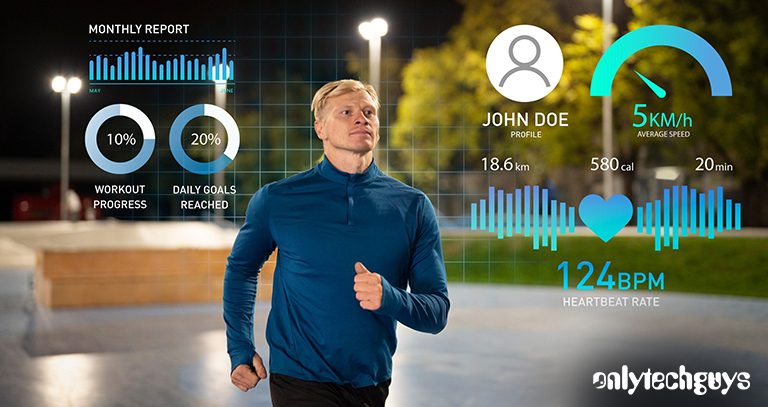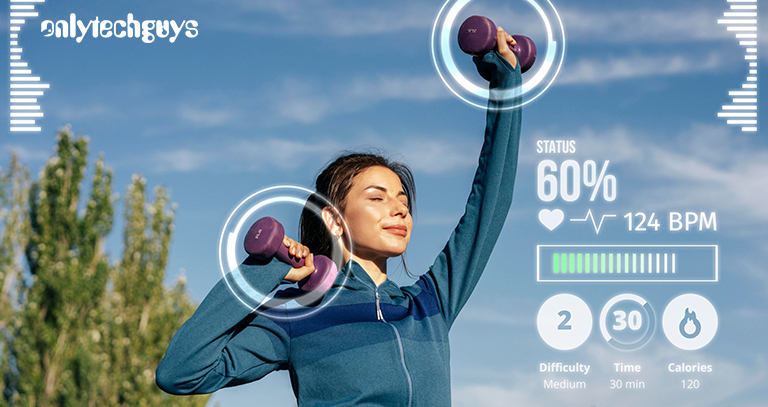Wearable Technology: Transforming Health and Fitness in the USA
Wearable technology has revolutionized the way people monitor and manage their health and fitness in the United States. From smartwatches and fitness trackers to smart clothing and virtual reality headsets, these devices offer a wide range of features that enable users to track their physical activity, monitor their vital signs, and even receive personalized health and fitness recommendations. In this article, we will explore the impact of wearable technology on health and fitness in the USA, including its benefits, challenges, and future prospects.

The Rise of Wearable Technology
In recent years, wearable technology has become increasingly popular in the USA, with a growing number of people incorporating these devices into their daily lives. According to a report by the Pew Research Center, approximately one in five Americans use a smartwatch or fitness tracker. This surge in popularity can be attributed to the convenience and accessibility of wearable devices, as well as the increasing awareness of the importance of maintaining a healthy lifestyle.
Benefits of Wearable Technology for Health and Fitness
Wearable technology offers a plethora of benefits for health and fitness, including:
- Tracking Physical Activity: Wearable devices such as fitness trackers and smartwatches enable users to monitor their physical activity levels, including steps taken, distance traveled, and calories burned. This information can motivate individuals to stay active and achieve their fitness goals.

- Monitoring Vital Signs: Many wearable devices are equipped with sensors that can track vital signs such as heart rate, blood pressure, and oxygen saturation. This real-time data can help users identify potential health issues early and seek timely medical intervention.

- Personalized Health Recommendations: Some wearable devices use artificial intelligence and machine learning algorithms to analyze user data and provide personalized health and fitness recommendations. This can include suggestions for workouts, dietary changes, and stress management techniques.

- Improving Sleep Quality: Wearable devices can also monitor sleep patterns, providing insights into the quality and duration of sleep. This information can help users make adjustments to their sleep habits to improve their overall health and well-being.

Challenges and Concerns
Despite the numerous benefits, there are also challenges and concerns associated with wearable technology:
- Data Privacy and Security: As wearable devices collect and store sensitive health data, there are concerns about the privacy and security of this information. Ensuring that data is protected and used ethically is a major challenge for the industry.
- Accuracy and Reliability: The accuracy of the data collected by wearable devices can vary, and there are concerns about the reliability of these devices for medical purposes. It is important for users to understand the limitations of their devices and consult healthcare professionals for accurate health assessments.

- Digital Divide: There is a digital divide in the USA, with disparities in access to technology based on factors such as income, education, and geographic location. This can limit the benefits of wearable technology for certain populations.
Future Prospects
The future of wearable technology in health and fitness looks promising, with several trends and innovations on the horizon:
- Integration with Healthcare Systems: Wearable technology is increasingly being integrated with healthcare systems, allowing for remote monitoring and telemedicine. This can improve access to healthcare and reduce the burden on healthcare facilities.
- Advancements in Sensor Technology: Continued advancements in sensor technology are expected to improve the accuracy and reliability of wearable devices, enabling more precise health monitoring.
- Expansion of Features: Wearable devices are expected to offer an expanding range of features, including stress management tools, hydration tracking, and even non-invasive glucose monitoring for diabetic patients.
- Increased Focus on Mental Health: As awareness of the importance of mental health grows, wearable technology is likely to incorporate more features aimed at monitoring and improving mental well-being.
Conclusion
Wearable technology has had a significant impact on health and fitness in the USA, offering numerous benefits such as tracking physical activity, monitoring vital signs, and providing personalized health recommendations. However, challenges such as data privacy and accuracy remain. As the technology continues to evolve, it is expected to play an increasingly important role in healthcare, offering more advanced features and integrating more closely with healthcare systems. As we move forward, it will be crucial to address the challenges and ensure that the benefits of wearable technology are accessible to all.




